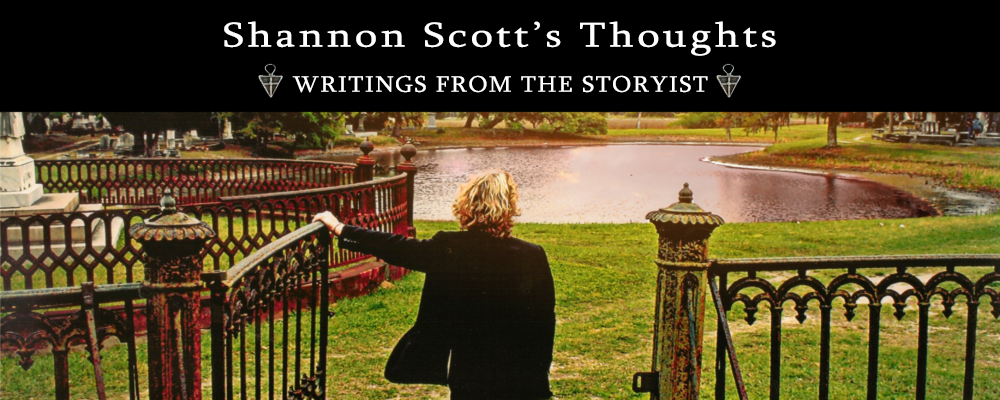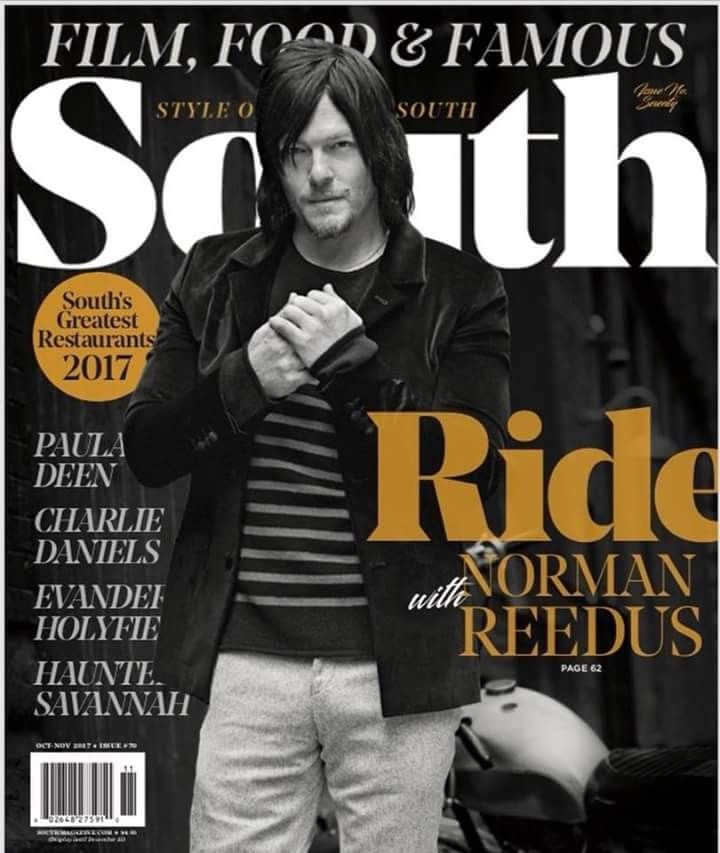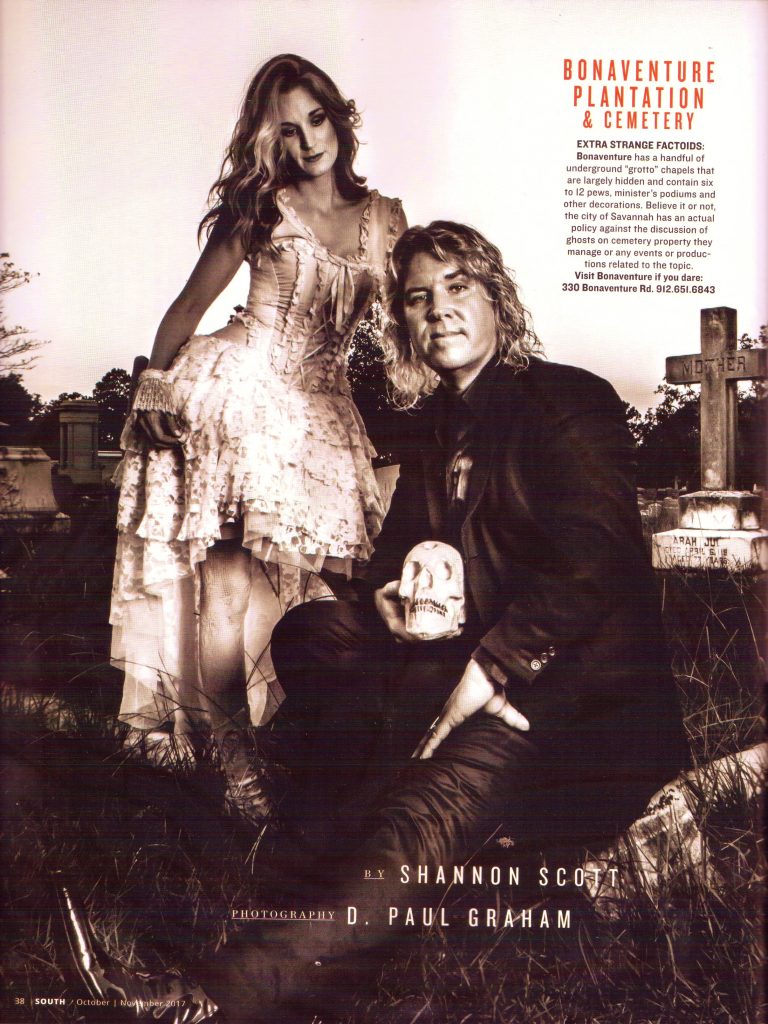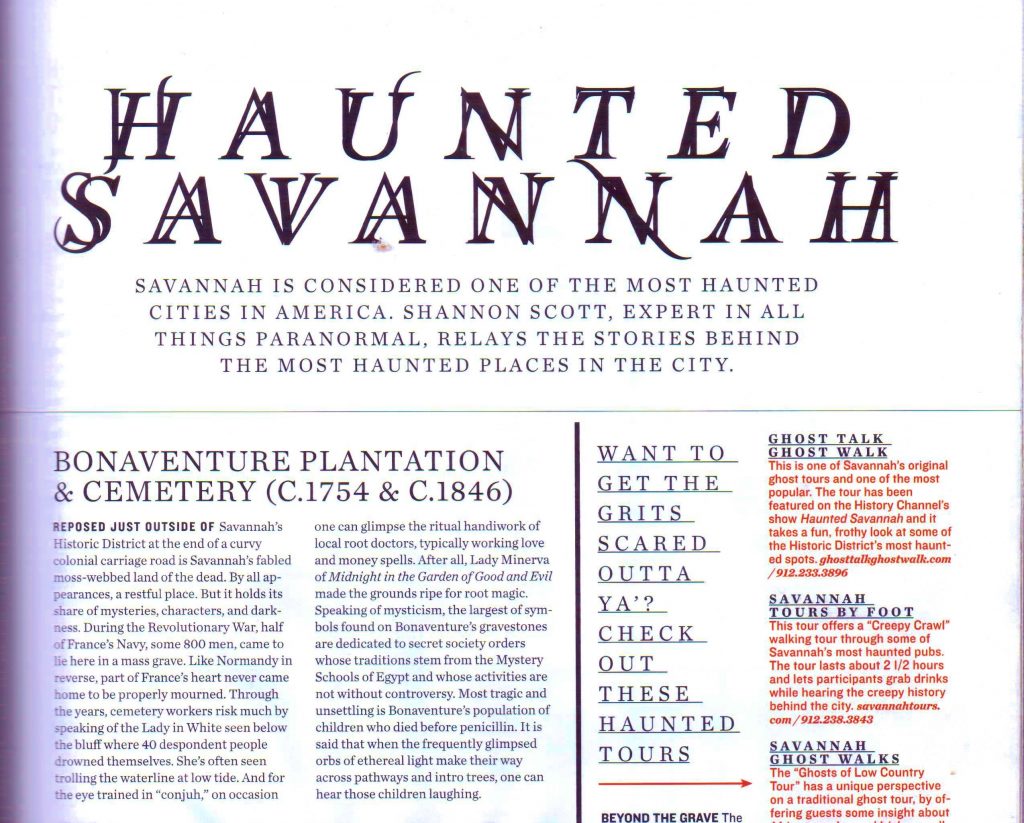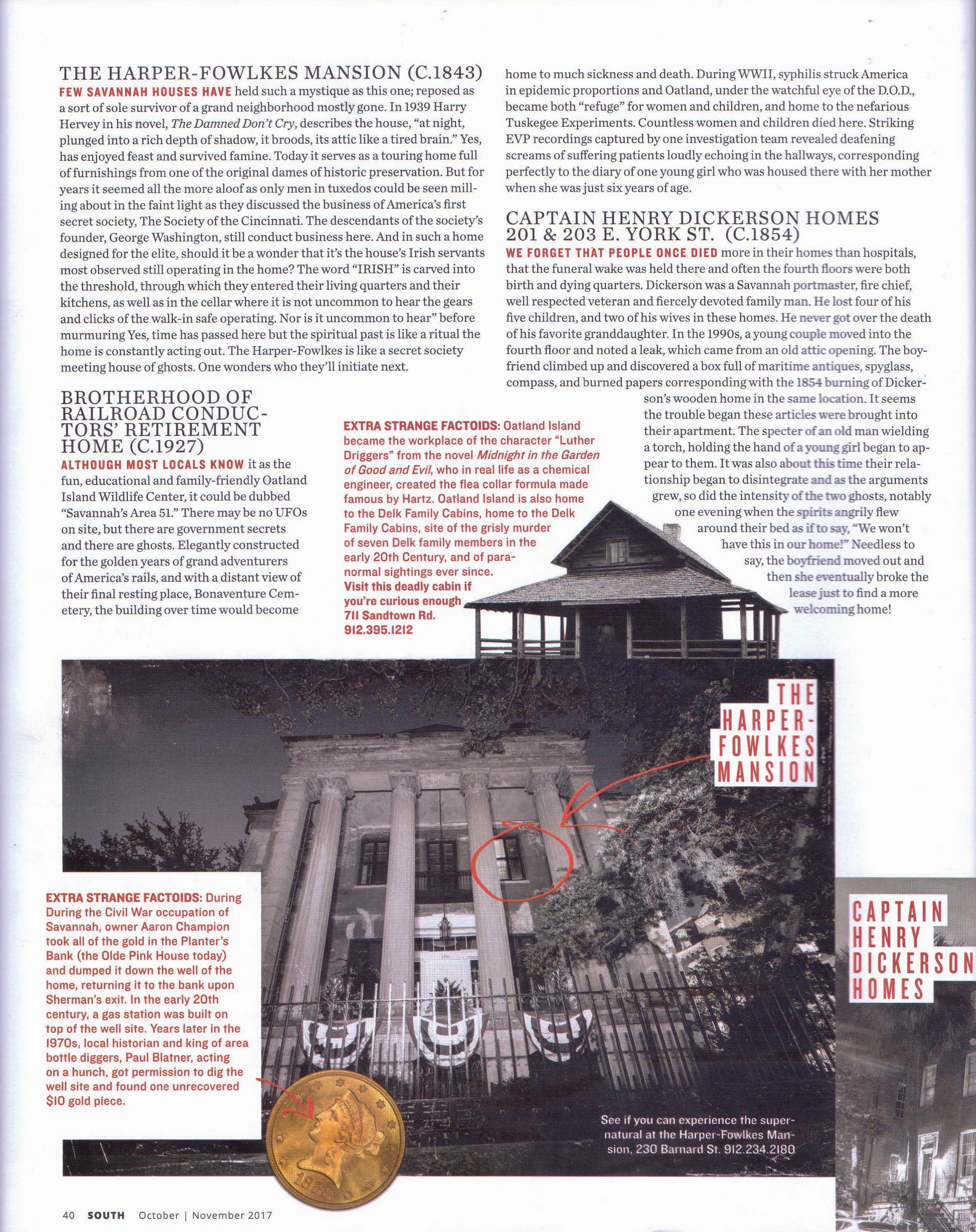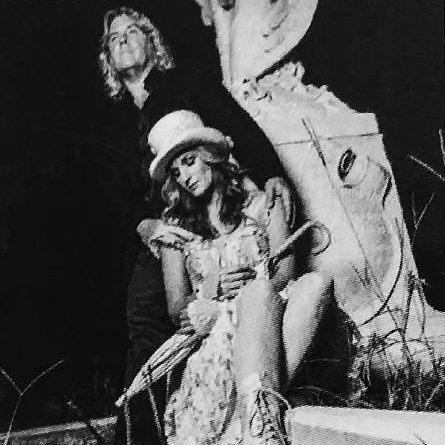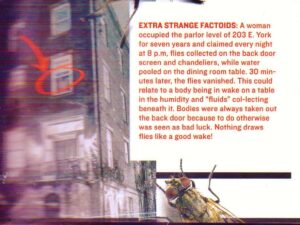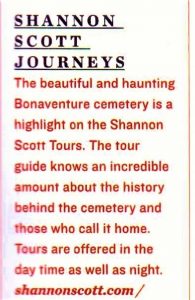This came out last Fall but I failed to put it up on my blog. My fellow storyist and good friend Lisa Marie accompanied me as model and the photo shoot itself was a lot of fun but they didn’t use a single shot of me smiling! The magazine had also lost its editor and not to bite the hand that feeds, but it suffered much from late late night copy editing with very sore eyes so please forgive the glaring errors! All the same, it was a good time had by all and I got to share some previously unknown Savannah historical and haunted facts! It also seemed fitting that The Walking Dead’s Norman Reedus was on the cover as I’m a huge fan of the show and as my fans know, I drop a reference to it at least once a day on my Bonaventure Cemetery Journey’s tour in a fun and unexpected way! Cause yeah, I roll like that!
Tag Archives: Savannah Georgia
In The Land of God & Gullah (Shannon Scott Quoted)
In the Land of God and Gullah
God and Gospel meet African tradition in the South Carolina Lowcountry
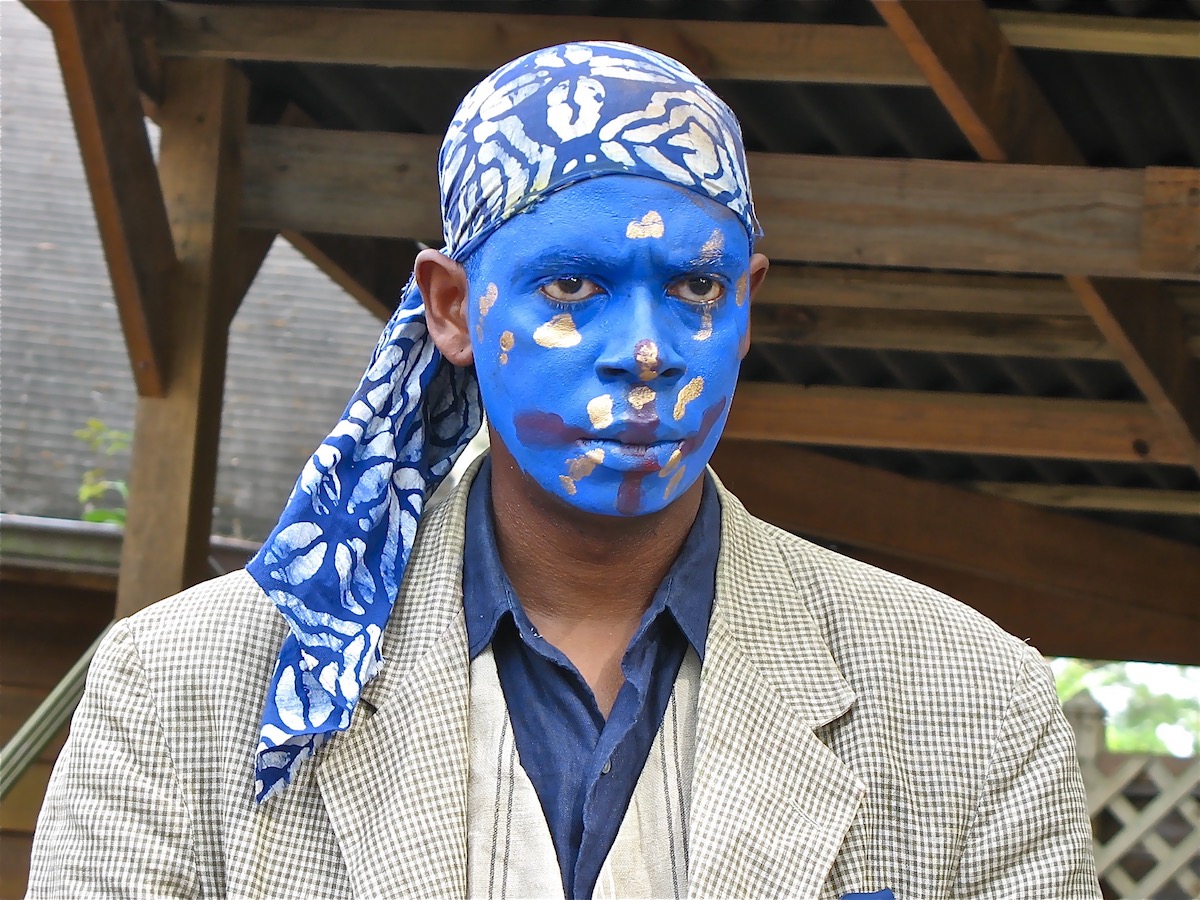
“You sure you want to drive out there?” an 82-year-old farmer warns when I stop to ask for directions on a dusty, rutted road in the Lowcountry of South Carolina. “Ahead are the Gullah islands,” he says, shaking his head. “They’re a peculiar people with mighty mysterious ways.”
As I voyage over a gauntlet of bridges and down winding, sun-dappled back roads, past lazy pastures and homespun ma-and-pa stores, decades peel back as St. Helena Island, the center for Gullah culture, emerges through a gauze of saltwater marshes.
The descendants of African slaves, the Gullah today live mostly on the remote barrier islands of South Carolina and Georgia. Neglected during much of the 19th century by their slaveholders — who fled the islands frequently for the cooler inland climate — the Gullah often governed themselves. As a result, they’ve preserved significant elements of their West African culture, such as their African-based Creole language and their expertise in sweetgrass basket-weaving.
But perhaps the Gullahs’ most enduring African legacy is their commitment to a spiritual way of life. “Church is more important in St. Helena, South Carolina, than anywhere else in America,” says Robert Middleton, an 80-year-old island tour guide, driving past a row of single-room churches under a canopy of moss-draped oaks.
As gospel music crackles over car speakers, Middleton, a deacon of a local church, says 90 percent of the people on St. Helena go to church weekly. An impressive figure, considering Gallup recently found only 42 percent of Americans regularly attend church.
“Like in Africa, we [Gullah] have always centered our lives around faith,” says Middleton, mopping his glistening forehead with the back of his hand on a sultry afternoon. For example, Middleton says, until not too long ago, the religious and community leaders of the island resolved most quarrels among themselves.
Middleton remembers an incident in the 1950s when two men involved in a shooting on the island were brought to the local Praise House — a small building used for local religious meetings — to resolve the dispute. When the shooter agreed to pay for the wounded man’s injuries, all was forgiven and the men became friends again. “The Bible tells us don’t go to bed angry,” he says, fishing for a key to open the small white clapboard Praise House.
“The Praise House back then was our community center,” Middleton explains, “where we regularly met, danced, stomped our feet and shouted out to the Lord. But today we have our modern churches,” he adds, standing alone in the quiet, century-old, hand-hewn wooden room, where he once attended jubilant services as a boy.
Middleton says that with God’s help, the Gullah culture will endure. “Our roots run deep here,” he says, stepping outside the Praise House, amid live oaks that have stood sturdy with the Gullah since slavery and the Emancipation Proclamation.
Gullah Grub
Setting down a bowl of crab soup and a plate of fried shrimp and shark with red rice, the ebullient Oshi Green, 28, says her family restaurant celebrates their Gullah heritage by serving traditional fare and offering a local hangout.
From the sweet-creamy aroma of fish chowder wafting from the kitchen to walls lined with colorful Gullah paintings and shelves boasting wooden African figurines, Gullah pride radiates from the Gullah Grub Restaurant.
Gullahs embrace an African culture that honors God by fishing, hunting and gardening, Green says, standing under a large painting of her father hunting. “Living close to the land has long defined African and Gullah culture,” she says.
But as the threat of posh golf courses and tourist-laden resorts closes in on the prize island real estate, many St. Helena residents fear the worst. “This has been our home for over 300 years,” sighs Green. A picture at the cash register says the rest: An African-American woman labors in the fields with the caption, “Gullah Heritage. We won’t give up our land.”
Green says African and Gullah practices often exemplify Christian principles. For example, barter not only provided for the Gullahs’ daily needs on the island during slavery and Reconstruction, but also underscored the Christian value of sharing. “Barter taught us to work together and look out for one another, because if we didn’t help each other, we would have perished,” she explains.
And today, Green says that sharing thrives not only in the churches of St. Helena — which often pool resources to help needy members — but also in the day-to-day life of the island. For example, Green says, when her family restaurant recently had a surplus of collard greens, they traded the excess with a farmer who had extra lettuce. “No money exchanged. It was a real barter,” she says.
Outside the wood-planked Gullah Grub, a grandmotherly Jery Taylor sits and weaves sweetgrass baskets the way West Africans have done for centuries.
Weaving baskets for over 50 years, Taylor says she puts a little bit of God in everything she makes. And it shows. Her baskets adorn the Smithsonian Institution in Washington, D.C. and galleries throughout the South.
Taylor says the care she puts into weaving baskets stems from reverence for God and her ancestors: “Gullah pride weaves deep.”
Spirit-catching bottles
Outside the gallery, a steel-limbed tree decorated with blue bottles greets customers. “That’s a Blue-Bottle tree,” Smalls says. At night, she explains, daylight-hating evil spirits roam and take refuge inside the bottles, but when the sun rises, the evil ghouls are trapped inside, where the morning sun kills them.
“You can’t get too far from superstition around here,” Smalls says.
Across the street, Victoria Smalls, manager of the Red Piano Too Art Gallery, leads the way through a labyrinth of jostling, color-grabbing paintings of Gullahs laboring in fields, fishing and attending church.
Smalls says Gullah art is practical. “You can paint on a wooden shingle or on an old wooden door. This is art for the masses, not the elite.”
She says the shout — popular in Gullah art and literature — celebrates a vital part of Gullah spirituality. Similar to the African ritual of spirit possession, the shout happens when someone falls under the influence of the Holy Spirit and sings or moves ecstatically. The line between Christianity and African spirituality blurs here, she says.
Outside the gallery, a steel-limbed tree decorated with blue bottles greets customers. “That’s a Blue-Bottle tree,” Smalls says. At night, she explains, daylight-hating evil spirits roam and take refuge inside the bottles, but when the sun rises, the evil ghouls are trapped inside, where the morning sun kills them.
“You can’t get too far from superstition around here,” Smalls says.
Gullah can preach
Down the road, on a Sunday afternoon, hands clap, bodies sway and voices rock the red brick walls of First African Baptist Church on Olde Church Road.
“If you give to the poor and have not love—you have nothing,” the Pastor declares to a packed church of well-dressed parishioners, his mellow cadence building in fervor.
With shout-outs of “Yes, sir” and “Amen,” the congregation engages in a dialogue with their pastor, a holy duet, a back-and-forth repartee.
“Unlike white churches, preaching in Gullah churches is not a one-way lecture from pastor to parishioners,” says Shannon Scott, a local historian and tour guide. “Gullah churches — steeped in West African worship — are about getting a response from their worshippers, getting everyone involved, the community, the village.”
Working toward a crescendo, the pastor feeds off his flock’s nodding heads, swaying bodies and supportive yelps. “Salvation comes through faith in the finished work of Jesus Christ on Calvary,” he bellows. More hands clap, more shouts. “Jesus ain’t playing. No, he ain’t playing!”
Scott says the emotionalism of Gullah worship, rooted in traditional African religion, is about experiencing and feeling God — letting God touch you. “It’s not about being passive or overly intellectual like other churches,” he says. “The Gullah got spirit.”
Playing it safe
“That color is called haint blue,” says the old Gullah man pointing to the sky blue trim around a home outside St. Helena. “It scares evil away. My people still have plenty of folk tales, you know.”
The snow-white-bearded Baptist, who asked to be called Adam for this interview, says haint blue is a heavenly color, and evil haints [spirits] won’t have anything to do with heaven. “This comes straight from Africa.”
“It’s trendy now for everybody to paint something haint blue around their homes,” he says, sitting on a park bench behind a home with a bright haint-blue flowerpot in front.
Adam doesn’t put much stock in superstitions, though. “That’s just African folklore. Only Christ can scare away evil spirits,” he says as the glint of a bright haint-blue cross winks beneath his shirt collar.
